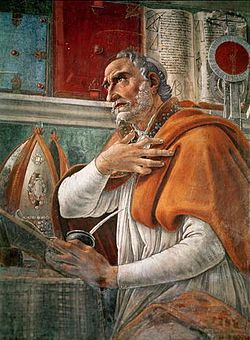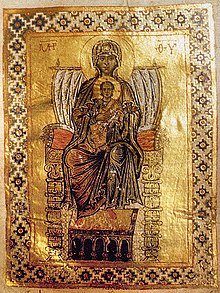Ancient Ritual Cleansing
 |
| Joachim Patenier, The Baptism of Christ, 1515 (detail) |
Apostolic observance
The source of the Christian Baptism ceremony or "sacrament" goes back to the ancient ritual bathing of Judaic custom. Christ and his early disciples were practicing Jews and would therefore have participated in the Jewish purification ritual know as Tvilah, where full body emersion in water was performed as a required religious ritual to purify an individual having “unclean” contact with a corpse or animal killed unintentionally. This cleansing would have to occur before reentering the Holy Temple. Subsequently, anyone converting to Judaism had to be first immersed in the Mikvey bath to allow the transformation and passage to occur.Aside from establishing their own Christian rituals and sacraments, the initial twelve apostles would remain observant of traditional Jewish rituals throughout their lives. Moreover, up until the Incident at Antioch, newly recruited gentile Christians would be required to first to convert to Judaism, which for adult and child males, included circumcision.
Baptismos vs Tvilah
 |
| Alexander the Great |
Also practiced to some extent during the time of Christ and into the Apostolic Age, was Hellenistic Judaism. Hellenistic Judaism was a blend of traditional Judaism mixed with elements of Greek Hellenistic culture. Although Hellenistic Judaism declined in the second century, it is thought to have influenced Christianity, with its following absorbed as early Christian converts. To some extent, this consolidation would also account for elements of polytheistic (Hellenistic) as carry-over influences to developing Christian doctrine.
The form of ritual cleansing performed by John the Baptist (Greek: Ιωάννης ο Βαπτιστής) was from the Hellenistic Judaism tradition and was referred to as “Baptismos” (Greek noun βάπτισμα). In this culturally adapted Judaic ritual, common water (i.e.: River Jordan) would replace the ceremonial bath of the ancient Judaean Mikveh.
 |
| Fresco of Baptism |
Christian inferences of spiritual cleansing
Like many Jewish rituals, this adaptation of Hellenistic Judasism’s "Baptismos" would henceforth be borrowed by Christians and used as their own rite of entry, just as the Tvilah had been for converts to Judaism.Jesus would emphasizes spiritual bathing in Matthew's Gospel [Matthew 28:19] when he states "Go ye therefore, and teach all nations, baptizing them in the name of the Father, and of the Son, and of the Holy Ghost", and again in John's Gospel [John 3:1-5] "Except man be born of water and of the Spirit, he cannot enter into the kingdom of God".
Unlike the christening of infants (associated with the fourth century's Augustine concept of Original Sin), the first Christians would immerse themselves in what became Holy Baptism, with the intention of maintaining a permanent state of grace and thereby transforming their life’s purpose as they continued to obey and spread Christ’s teachings. However, neither Jesus nor his initial apostles made reference to the inherited sin of Adam, sin at birth, or upon children.
 |
| Islamic Wudu before Prayer |
Ritual Muslim Purification
Islam does not subscribe to Tvilah or Baptism but instead embraces "Wudu" or ritual prayer purification. Although required before prayer, one instance of ritual washing is valid for an entire day provided certain conditions are met (i.e.: has not slept, contact with the opposite sex, flatulence, etc.). The pre-prayer ritual of bathing is usually done with water but can be substituted for dirt or sand (dry ablution or "Tayammum") when water is unavailable.
Origins of Original Sin
 |
| King David Playing Harp” by Von Honthors (detail) |
However, the meaning of this was never embraced within Judaism to infer inherent sin at birth for all mankind. The Psalms were composed by David while he was a wanted fugitive, running from King Saul. It was common practice in ancient times (to some extent today) to blame all misfortune on sin or wickedness. Therefore, sin at birth is non relevant within Jewish beliefs, nor is it pertinent to any purification ritual.
Relevance to physical and eternal death
Doubtless, the original apostles and their immediate followers believed baptism would rid them of sin, though the concept of Adam's first sin passing throughout mankind's linage wouldn't be touched upon until sometime between 50 and 55CE. At that time, roughly 20 years after the passing of Christ, Paul the Apostle's (Saul of Tarsus) would write in his Epistle to the Romans (Romans 5:12-21), "Therefore, just as sin entered the world through one man (Adam), and death through sin, and in this way death came to all people... even over those who did not sin by breaking a command, as did Adam." Nevertheless, the punishment Adam and Eve received for their sins was to become mortal. Therefore, the inherited punishment Paul refers to not damnation, but death. |
| Saint Augustine of Hippo |
The Council of Trent, Baptism and the tainted souls of infants
In reality, the doctrine of original sin or being born in a state of sin, wasn't formalized until the Council of Trent (1545 and 1563). The council was assembled in response to attacks made upon Catholic doctrine throughout the Protestant Reformation. During the council, a list of Papal Decrees were drawn up including the formal establishment of the seven sacraments. In regards to the sacrament of Christian Initiation or Baptism, Canon 1250 of Christian Catechism issued the following statement, "Born with a fallen human nature and tainted by original sin, children also have need of the new birth in Baptism to be freed from the power of darkness...".The Virgin's Birth
For all the ancient imagery and vague inferences, the Immaculate Conception, or the Virgin's stainless birth, would not become Church canon until the 19th century. Though Original Sin and the Immaculate Conception have long been established as Church precepts, Gospel evangelists make no mention of either concepts within canonic gospel. Nevertheless, Luke does site the Virgin to have remained a virgin throughout conception of Jesus, "...a virgin espoused to a man whose name was Joseph... for thou hast found favor with God. And, behold, thou shalt conceive in thy womb, and bring forth a son" [Luke 1:27-30]. However, there is no reference to the Virgin's birth as being free of Original Sin.
 |
| Icon of Mary's Immaculate Conception |
Church doctrine surrounding The Immaculate Conception refers only to the conception of Mary, void of Adam's Original Sin, while within the womb of her mother, Saint Anne and not her state of grace or virginity during Christ's conception or birth. The Council of Trent in 1547 AD would go even further and state that she was “...free of ALL sin, original or personal”. This final Trent edict would then clearly establish both Mary's state of grace and virginity from birth up until the issuance of Jesus.
Immaculata Perpetuum
Pope Sixtus IV made the The Immaculate Conception a formal feast day in the Catholic Church in 1476. Two and a half centuries later, in 1705, the feast was made a Holy Day of Obligation by Pope Clement XI. However, on December 8, 1854, Pope Pius IX declared the papal bull Ineffabilis Deus making the Immaculate Conception apostolic constitution. Subsequently, there were those in objection who considered this final edict to be an over-deification of Christ’s earthly mother and a distraction from Christianity’s primary worship of Christ.However, aside from concerns of over-deification, Protestants adhere to Mary's virginity and Immaculate Conception, as do Muslim's from the Quran, which sites "Isa" (Mary) as being the result of a virgin birth. However, Muslims consider Jesus to be a prophet, not the Son of God, and do not pray to, or otherwise glorify the Virgin.
The John the Baptist caveat
Lastly, though not church canon, John the Baptist is considered by some to be immaculately conceived because of the words of Saint Catherine of Siena (1347-1380 AD) “Wretch that I am! John the Baptist never sinned and was sanctified in his mother’s womb. And I have committed so may sins...” Nevertheless, John the Baptist remains the icon of Christianity's act of purification.|
|
Got Feedback?
Comments? Questions? Corrections? Any feedback at all? Just click on the comments box at the bottom of this page and enter your thoughts. All comments are welcome.
Santuario de Guadalupe, the oil painting by Tom Mallon. This 42" x 22" canvas is the latest addition to the Santa Fe Portrait Series. The Santuario is the oldest shrine to Our Lady of Guadalupe in the US.
Visit this later update by CLICKING HERE
Shostakovich and Cultural Snobbery, Could anyone survive Stalin's Purges, compose a large body, write for himself and the masses while producing constantly great work?
Visit this later update by CLICKING HERE
Tom Mallon's website "MallonArt". This website will provide you with links to all his paintings, drawings and other artwork portfolios, including the ongoing series entitled the Santa Fe Portrait.
Visit this later update by CLICKING HERE




No comments:
Post a Comment